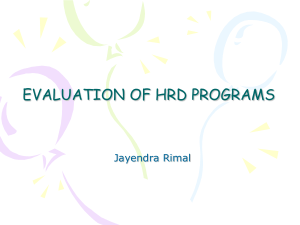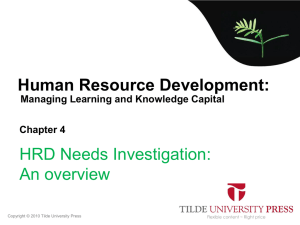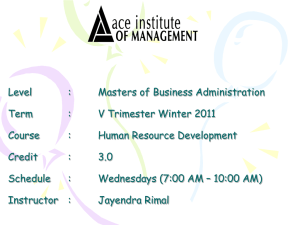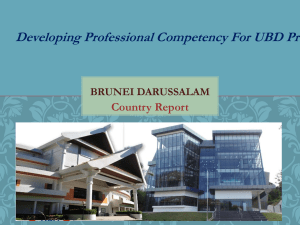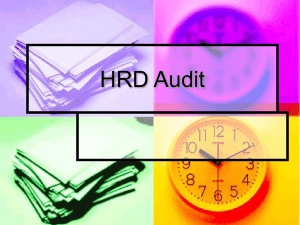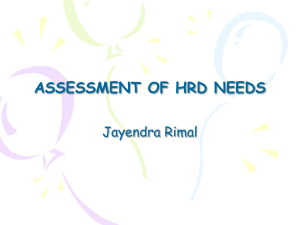Group 1 PPT HRD audit shared by debo
advertisement
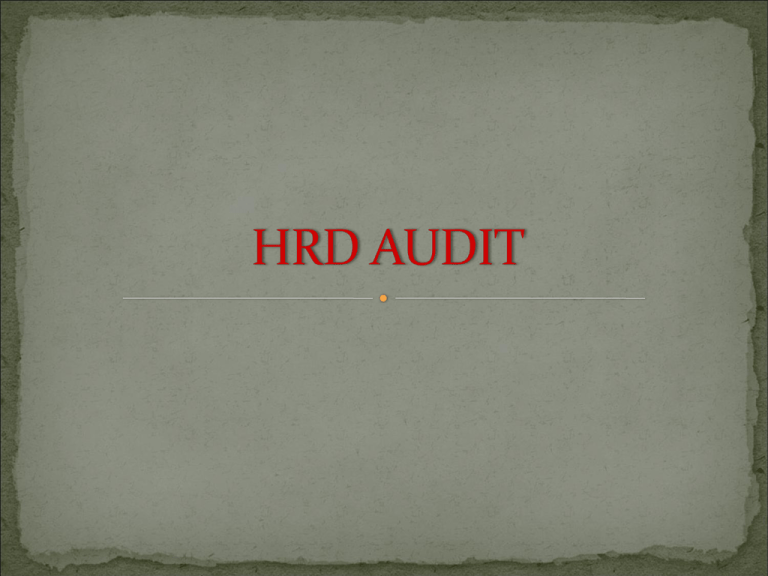
BETTY METHEW RAVI ROSHAN DUNGDUNG ACHINT CHHABRA DEBABRATA SAHA PRITEY BALA HARSHWARDHAN SINGH RATHOOR RICHA NAUTIYAL It is a Comprehensive Evaluation of the existing HRD Strategies and Systems Structures and Competencies Culture and Values And their appropriateness to achieve the short and long term business goals of the organization Focal Points Culture building strategies Quality and Customer Orientation Communication strategy Efficiency management and cost reduction strategy HRD Audit helps discover the areas of strength as well as developmental areas , thereby strengthening the effectiveness of HR in the organization. HRD Audit attempts to highlight the current status, strengths, weaknesses and cost effectiveness. HRD Audit attempts to study the extent to which the organizational culture fosters Openness Collaboration Trust Authenticity Proactivity Autonomy Confrontation Experimentation HRD audit is Comprehensive: It starts with an understanding of the future business plans and corporate strategies. The HRD audit starts with the following questions: Where does the company want to be ten years from now, three years from now and one year from now? (answer to this question contribute to the HRD business linkages score of the HRD score card) What is the current skill base of the employees in the company in relation to the various roles and role requirements? (answer to this question contribute to the competency score on the HRD score card) What are the HRD subsystems available today to help the organization build its competency base for the present, immediate future and long-term goals? (answer to this question contribute to the HRD systems maturity score of the HRD score card) What is the current level of effectiveness of these sub- systems in developing people and ensuring that human competencies are available in adequate levels in the company? (answer to this question contribute to the HRD systems maturity on the HRD score card) Is the HRD structure existing in the company adequate enough to manage the HRD in the company? (answer to this questions contribute to the HRD competencies score of the score card) Are the top management and senior manager styles of managing people in tune with the learning culture? (answer to this question contribute to the HRD culture score of the HRD score card) HRD Audit Examines Linkages with other Systems: Like TQM, strategic planning etc. HRD audit is Business-driven: It keeps business goals in focus, at the same time, it attempts to bring professionalism in HRD 1. To make the HR function business-driven 2. To take stock of things and to improve HRD for expanding, diversifying, and entering into a fast growth phase 3. For promoting professionalism among employees and to switch over to professional management 4. Multinationals want to know the reasons for lower labor productivity and for improving their HRD strategies in the Indian context 5. For growth and diversification 6. Dissatisfaction with a particular component 7. Change of leadership Role of HRD Audit in Business Improvement 1. It can get the top management to think in terms of strategic and long-term business plans 2. Changes in the styles of the top management 3. Role clarity of the HRD department and the role of line managers in HRD 4. Improvements in HRD systems 5. Increased focus on human resources and human competencies 6. Better recruitment policies and more professional staff 7. More planning and more cost-effective training 8. Streamlining of other management practices 1. 2. 3. Strengthening accountability through appraisal systems and other mechanisms TQM interventions It can enhance the ROI (return on investment)( of the HR function To determine the effectiveness of management programs. To locate the gaps in the implementation of various HRD programs. Develop a statement of findings with recommendations for correcting deviations. To study the extent to which line managers comply with HRD policies. To study current manpower inventory. To examine and pinpoint strength and weaknesses related to H.R. areas and Skills and Competencies to enable an organization to achieve its long-term and short-term goals. To increase the effectiveness of the design and implementation of human resource policies, planning and programs. To help human resource planners develop and update employment and program plans. To evaluate current effectiveness. To standardize practices across multiple sites within a division or company. To improve performance levels to key customers within the organization. The general process of conducting an audit includes seven key steps: 1. Determine the scope and type of the audit determine exactly what areas should be targeted for review. 2. Develop the audit questionnaire helps guide the audit team in scrutinizing all critical areas of a company’s HR practices. Important to invest sufficient time in developing a comprehensive document. 3. Collect the data 4. Benchmark the findings comparison will offer insight into how the audit results compare against other similarly sized firms, national standards and/or internal company data. 5. Provide feedback about the results summarize the data and provide feedback a roadmap for action can be developed 6. Create action plans The company must create action plans for implementing the changes suggested by the audit 7. Foster a climate of continuous improvement it is important to engage in constant observation and continuous improvement of the company’s policies, procedures and practices so that the organization never ceases to keep improving. Interviews; Questionnaires; Observation; Secondary data analysis; and Examination of documents and communications The score card is a series of four letter grades assigned by the auditors on the basis of the HRD Audit.The HRD Score card helps identify the areas the firm needs to focus at a glance. HRD Systems HRD Competencies HRD Climate Business Linkages Traditionally there have been the financial audits of a company. Gradually auditing has evolved and has become function specific, function audit diagnoses and analyses the situation, set measures of control and give advice within the boundaries of functional area. HR audit is also the audit of HR function. Audit has a wider perspective defining future lines of action. HR Audit performs two basic functions ( Cantera, 1995). 1. facilitates the development of managing process. 2. Controls and evaluates the policies and established processes. Important noteOrganizations assume that their HR department is doing “everything”…. Keys the HR department’s mission and goal in sync with the organization’s needs and long term business strategy. Identifies and prioritizes opportunities for improvement, as well as area of potential risk. Improves efficiency and productivity so that the department can better serve employees and customers. Identifies root problem areas and fix them before they become more widespread. Find cost- reduction opportunities. Improves employee communications and moral and help establish better credibility and perceptions of top management. Provides a reality check in order to identify and correct any gaps between what is intended and what is actually being delivered. Implements and stays current with best practices. http://www.citehr.com/184468-suraj-asks.html http://www.younghrmanager.com/the-importance- and-benefits-of-human-resources-audits Human resource management- Seema Sanghi. Human resource management- Aswathappa. Wikipedia.
